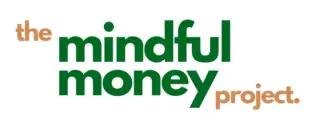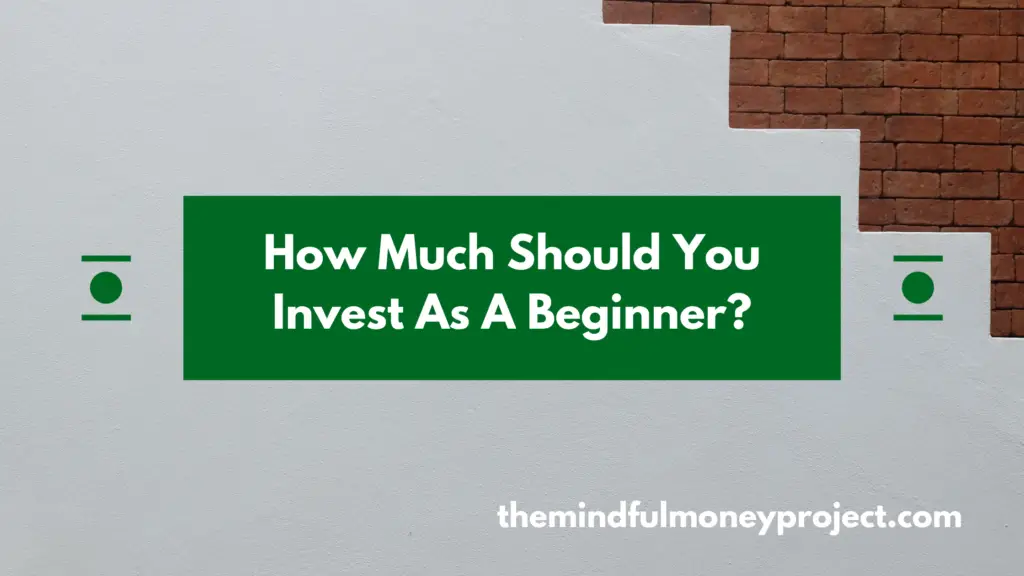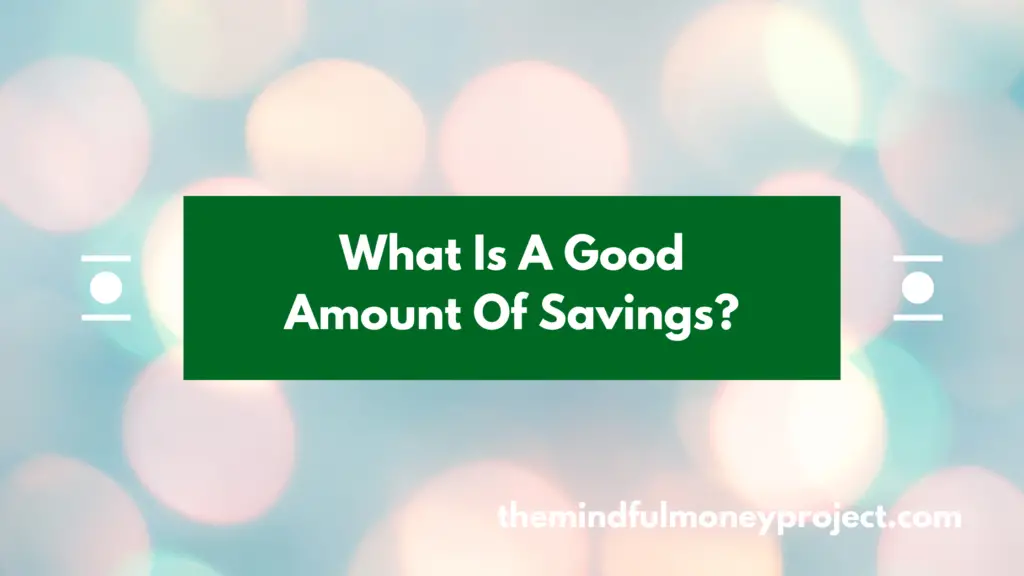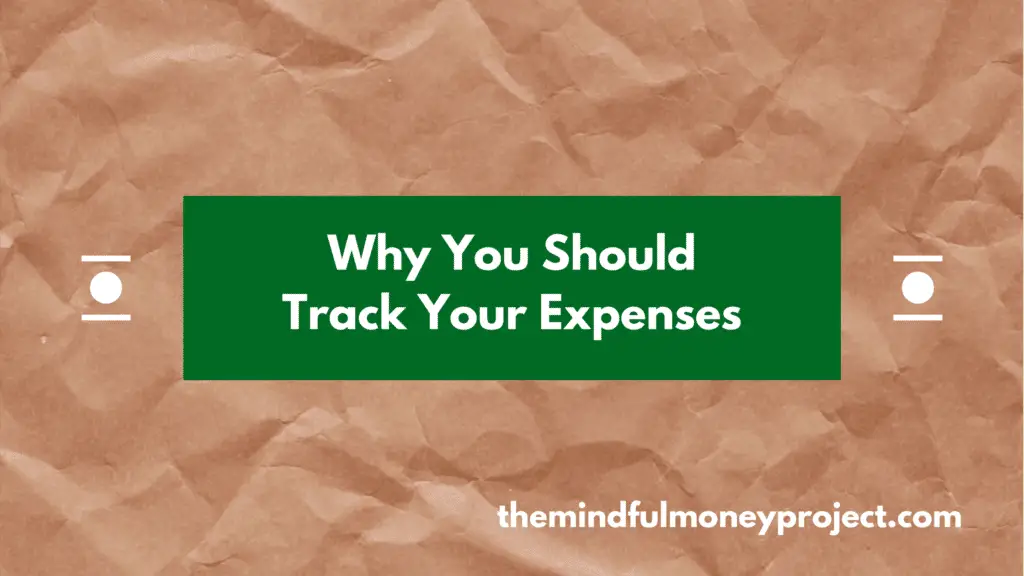Investing is the more glamorous side of personal finance. But it can seem like an unapproachable world. Suits, trading floors and stock charts all come to mind when you are unfamiliar with the world. One of the most common questions we hear is; “how much should you invest as a beginner?”. After you read this article, you’ll be able to answer it for yourself.
Before we answer the question properly, it is really important to check in on your readiness for investing.
As with all investing, your capital is at risk. This article is not financial advice. Please carry out your own research or find a financial advisor before making an investment decision.
Where are you currently on your financial journey?
This is super important. The short answer to the question of how much should you invest very much depends on your personal circumstances. More is not generally always better.
I look at your personal financial journey as a set of milestones with which you need to work your way through. In order.

I tried to jump ahead of a few steps and I ended up getting burnt (I’ll explain more later)!
The steps are:
- Build a small emergency fund of £1,000
- Clear any high-interest consumer debt (so excluding any mortgage or student loan debt)
- Build a more sufficient emergency fund of 3-6 months worth of living expenses (not income).
- Start to invest
Small emergency fund
This is critical. Having a pot of cash to hand acts as such an important buffer. If anything unexpected happens, you won’t be completely derailed. Did your car break down? No dramas, use the emergency fund. Roof needs fixing? No drama, turn to the emergency fund.
If you’re living without a buffer, you know just how stressful it can be if an unexpected bill comes through.
If you don’t have this small £1k buffer, build this up before investing.
Why? If you start investing without a buffer, and an emergency comes up which you need cash for, then you will need to sell your investments to pay for them. If you’re in a down market then you would have made a loss on your investments.
Clear any high interest debt
This is a simple matter of what is the most optimal way to use your money.
If you invest your money in the stock market and earn, say, 6% a year, then this will be significantly less than the interest you’ll be paying on most consumer debt. Credit cards tend to run at the 15%+ rates for a lot of people.
Prioritise clearing any debt (excluding mortgages and student loans), before looking to invest.
Build a robust emergency fund
Now, this is the first step to financial stability and is critical before investing.
Build up a cash pot of 3-6 months’ worth of living expenses. If you’re more cautious or have a variable income, building an emergency fund on the higher end might be worth doing.
Once you have this fund, it means that you can absorb most shocks or unexpected costs without having to dip into your investments.
Tick, tick, tick – you’re ready
Once you’ve got all of those boxes ticked, you’re ready.

Don’t try to skip these steps. Believe me, I tried! I was impatient and rather than build up an emergency fund or pay off my personal loan, I rushed straight into investing.
What happened?
Well, I got hit with some car repairs that I should have been budgeting for anyway. I had to sell some of my investments and accepted a stinging 20% loss. Luckily the numbers weren’t big, but don’t do what I did! Lesson learned the hard way for me.
What are you investing for?
Is it a short or a long-term financial goal?
Are you investing for retirement? Or for a wedding in 2 years time?
Due to the volatility in the stock market in the short term, you want to be investing for a minimum of 5 years, ideally more. This is enough time for any down markets or shocks to have been weathered.

Once again I got burned here, as I was investing for a house deposit which I was expecting to use within 2 years (too short-term a goal to be investing for). As the stock market tanked in March 2020 when the Covid pandemic hit, I couldn’t stomach the volatility and sold my investments, making a 30% loss. Lesson learned the hard way again!
If you’re investing for a longer period, you are much more able to weather market dips because you know you have time to bounce back. If you know you need it in the short-term, sticking to more cautious investments or savings accounts is the better option.
How much should you invest as a beginner?
In order to answer this question, you’ll need to have an appreciation of two things:
- How much do I need to invest to reach my goal?
- How much can I afford to invest?
These two pieces will answer your question.
How much do you need to invest for your goal?
What is your goal?
Firstly, think about why you want to invest. Is it for retirement? Or for a wedding? For your kids or for their future education costs?
Once you have an idea of what it is you’re investing for, you’ll need to quantify how much cash you’ll need for this goal.
For example, if your financial goal is to pay for your kids’ education and you know this will cost £50,000, then this is your goal. Similarly, if you are investing for a wedding (which is 5+ years out) and you think it will cost £20,000, this gives you a number to aim for.
You’ll likely be able to estimate the amount of cash you need for most goals, but retirement can be a tricky one. A decent rule of thumb is to work out (or estimate) your monthly living costs in retirement, multiply by 12 to get your annual living costs and then multiply by 25 to get the size of your required pot.
This rule of thumb is used within the FIRE (financial independence, retire early) community based on the Trinity Study of a 4% withdrawal rate. This may be too aggressive or too cautious for your own situation so when it comes to retirement, doing more research (it would be a whole new article!) or talking to a financial advisor will help inform you.
How long do you have to invest?
What is the timeframe of your goal? Will you be looking to use the money in 30 years (retirement)? Or will you be looking to use it in 5 years?
Anything under 5 years is usually not a suitable candidate for investing as the tool of building it. The stock market can be volatile, whereas over the long run these fluctuations are smoothed out.
I got burnt with this. I was investing whilst building for a house deposit which I knew I was going to be using in two years time. I ignored the advice around investing for a short period of time. Then when the market started to tank in March 2020 as a result of the covid pandemic, I couldn’t stomach to see my deposit reducing (as I knew I needed to use it later that year), and therefore sold my investments. This crystallised a 30% loss. Investing with an appropriate time frame is key to make sure you stay invested during the down times, because you know you can ride it out.
Working it out
Now that you know:
- how much your goal will cost
- how much time you have to build it
You can start to put together a better estimate of how much you need to be investing to reach your goal.
An easy way to calculate the required monthly amount is to use the Savings Goal calculator from The Calculator Site.
For example, if Bob wanted to save £20,000 for a wedding in 10 years’ time. He goes over to the calculator and enters £20,000 as the “savings goal”, with 10 as the “years to goal”.
A common investment return assumption to use is 7% (which is based on the long-term historic return of US equities of 10%, after stripping out average inflation). However, I’ll use 6% in my example to layer in a level of cautiousness, but you can reduce this if you would like to be even more cautious as of course historic returns don’t predict future performance.
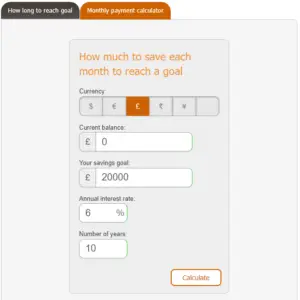
Under these variables, Bob will need to invest £122 per month to reach his goal in the timeframe.

What is your attitude to risk?
The required amount that Bob will need to invest will go up if you expect the return to be lower.
Generally, a higher risk means a higher return. Therefore, if you have a low tolerance for risk and won’t be able to stomach the large swings in prices, you may be looking to invest in a lower risk fund or asset, resulting in a lower expected return. This will mean that you’ll likely either need to invest more each month to reach your goal in the same timeframe, or you’ll need to invest for a longer period of time to reach your timeframe.
Now that you know what you need to be investing to reach your goal, can you afford it?
How much can you afford?
Now that you know how much you need to be investing, you’ll want to know whether you can actually afford it or not.

Assuming you’ve made it this far, I can assume you’ve been living under your means as you’ve built an emergency fund and you’ve paid off any high-interest debt.
This means that you have the basics down. If your expenses are lower than your income, then you’ll have money left over to build your net worth. This is the money you’ll be using to invest.
If you already have a budget, you can skip this section.
However, if you don’t have a budget and therefore don’t know how much you can afford to invest, keep reading.
Build a budget
To build a budget, start by listing out your monthly after-tax income.
Then jot down the main categories of spend that you tend to make. Mine look like this:
- Rent
- Utilities
- Entertainment
- Transport
- Groceries
- Netflix/Phone
- Gym
The next step is the most time consuming, but the most useful.
You’ll need to jot down a budget for each category.
This isn’t supposed to be restrictive at this stage. Ideally you’d allocate money to areas which you enjoy, but keep expenses low on the other areas. This is about intentionally and mindfully setting your budget to align with the lifestyle you want to lead. For example, you may want to keep your budget low for groceries (by shopping at a discounter like Lidl and meal planning), but allocate a decent chunk of money to the gym if this is your thing. Nowhere in life are trade offs more obvious than in setting a budget. With a limited pool of income to allocate, you’ll need to decide on what is or isn’t important for you and allocate your income accordingly.
Once you’ve jotted down some budgets for each category, you can easily sense check to see if they’re realistic based on your historic spending by using an app like Emma or Money Dashboard to connect to your bank accounts and calculate your monthly spend. You can do this manually by tagging up bank statements if you would prefer, it will just take longer!
Building an investment category
Now that you’ve got your expenses all sorted, you’ll hopefully be left with a figure that is “left over” money.
If this is equal to or more than the number you landed on in the section above on how much you need to be investing, then congratulations! Just start investing that amount monthly and you know you’ll get to your goal with time.
If you don’t have any money left over after your expenses are taken out then you’ll need to do one of a few things:
- make savings to your budget categories to create a gap between your income and expenses (to leave some for saving/investing)
- grow your income
Growing your income is much harder to begin with and takes longer compared to making savings, but the upside is limitless.
The aim of the game is to increase the gap between your income and your expenses, leaving money left over to invest.
For most people, this section will be the limiting factor.
You’ll be limited by what you can afford as opposed to what you need to invest.
In this instance, it might be useful to re-assess your financial goal to make it more realistic given your current circumstances (whilst still aiming to grow the gap between your income and your expenses).
For example, if you need to invest £200 per month to reach your goal, maybe you make your goal more realistic by pushing it back by 5 years or by reducing the amount required for it?
Benefits to starting small
If you’re not sure what it is you’re saving/investing for, or are not yet unable to hit your required monthly investing amount, there is still a tonne of benefit to getting started investing rather than waiting for the perfect time.
- allows you to get more comfortable with the idea of investing
- you’ll be pound cost averaging your investments
- time in the market beats timing the market
- platform availability is high
Get comfortable with investing
By putting money in each and every month, you’ll get comfortable with having your money invested in the stock market.
You’ll get comfortable with the platform you use and the investments you make. All of this will set you up in good stead.
Pound cost averaging (dollar cost averaging)
This sounds quite fancy but in reality, is quite simple. This is where you invest the same amount each and every month.
The benefit of this is that when the market is down, your investment buys more, and when the market is up, your investment buys less.
Over time, this means your average per-unit cost is lower.
Time in the market beats timing the market
Some people have an investment strategy of waiting for a dip in the market to make their investment.
This has been proven repeatedly to be a more costly strategy.
Fortunately for us, this means that the best course of action is actually less action.
Set your monthly investment to go into a simple index fund or mutual fund that tracks the market, and forget it. Even better, have it set up so you have an automated investing system (set a direct debit up with your platform for the day you get paid).
Let it sit there over the period of your goal. Don’t worry about investing in an individual stock or researching the hottest new company. Simply getting exposure to the whole market (and therefore the whole asset class) is normally one of the most effective ways to get robust returns.
Platforms for beginners
A lot of new platforms and investment apps are aimed entirely at beginners and therefore have low minimum investment amounts and low fees.
I’ve put together a roundup of the best investment apps for beginners here which helps you to compare the best one for you.
As a beginner, you’ll want to look for:
- low minimum deposits
- low fees (even though they may seem small, fees can add up to a phenomenal difference over the life of an investment)
- educational content (to help you understand your own attitude to risk and more about the world of investing)
- available on different platforms (on your phone and in the browser)
- have not so much choice that you’re overwhelmed (look for ones that offer a simple investment option such as index funds or exchange traded fund[s] that track the market and give you access to a diversified portfolio easily)
- have availability of ISAs so you can avoid paying capital gains tax within the ISA wrapper
Conclusion
So, you should now feel more confident with answering for yourself; “how much should you invest as a beginner?”.
For most people, how much they can afford to invest will be the limiting factor.
But it is important to consider how much you need to invest to reach your goal in your expected timeframe, as this will allow you to take the action necessary to bring them in line.
This could be to increase the amount you have available to invest by reducing your expenses, increasing your income or both.
Alternatively, it might jog you to re-assess your investment goal to set a more realistic one that you can achieve with your current circumstances.
If you’re ready to invest, then there are plenty of platforms geared towards beginners who have low minimum deposits.
Pick an investment platform, and once you set up an investment account with them, they provide great contextual content to help you improve your knowledge on investing.
Further, starting now and starting small will set you up well into the future.
I hope this has helped answer your question “how much should you invest as a beginner”, but please let me know in the comments how much you started with (if you’re happy to share).
